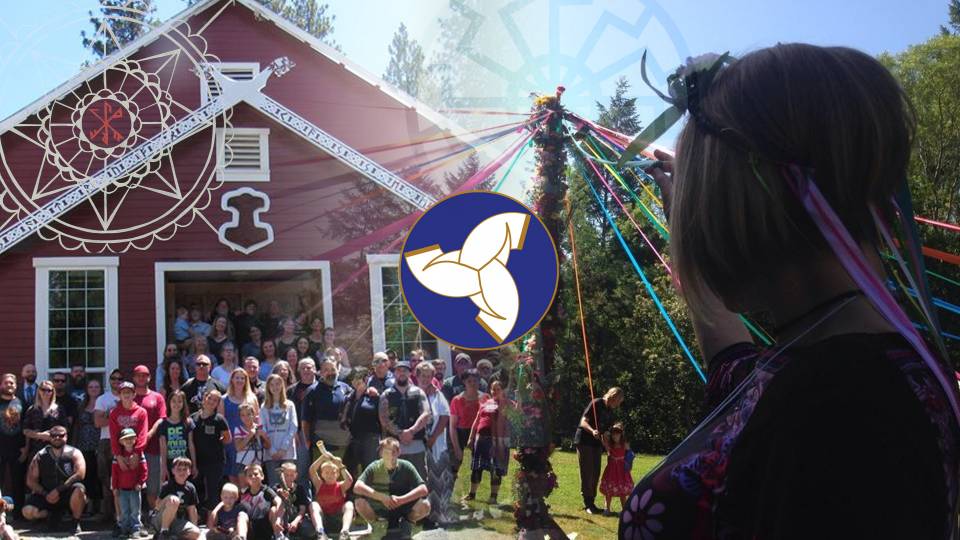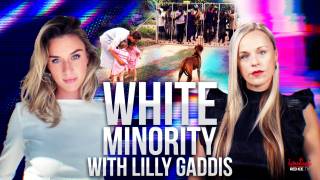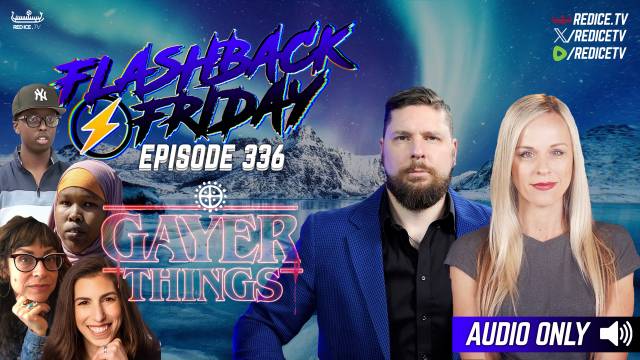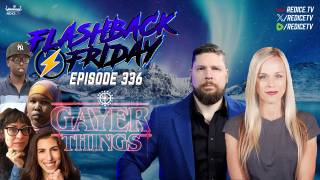Coming Home to Asatru at Midsummer
Midsummer, also known as Summer Solstice, marks the height of the sun’s power and the time of year when elongated days stretch out like boundless, curving paths into the mysterious future. Each morning begins with raucous, pre-dawn bird songs, enticing an early departure from slumberland and the instinctive urge to amble out to the misty patio to blearily breathe in the musky, sweet air gently moving across the bay. The seeds of spring have been sown, the rich soil now bursting with fresh life beginning to show signs of promising yields. These vibrations of mother earth are so intoxicatingly tangible during this season, and it delights to have the scent of dewy leaves or the way the sunlight catches on the coral petal of a rose resonate with memories from days long gone by. I can feel the velvety skin of my grandmother’s hand on my palm, hear a pocket of jangling change and grandpa singing, “That’s the spirit!” Faint whispers from the ancestors reminding me to give thanks for the life giving force of the sun and pay homage to the many generations that diligently farmed the land, year after year, spanning back for centuries and making my future existence possible.
Like many, the archetype of the sun was a central theme in my childhood artwork depicting the family and home – always a symbol of the joy and free-spiritedness of Summer and the warmer months of late Spring and early Autumn. My quintessential bipolar Gemini personality is underscored during my birth month of June, when a sharp contrast to the usual gloominess that tends to weigh down during the dark days of Winter is quite apparent. In Norse mythology Sunna is the Goddess of the Sun, the English word ’sun’ is derived from her name and Sunday is named for her. Her brother is Mani, God of the moon, who reflects the light and might of Sunna’s power. Both Sunna and Mani are children of Mundilfari, a celestial being who governs the turning of the skies and the orbits of heavenly bodies. Sunna is wed to Glenr, a fire etin whose name means “opening in the clouds.” She is known to drive her chariot pulled by the horses Allsvinn and Arvak across the sky every day, perpetually chased by the wolf Skoll, who seeks to devour her, yet keeps her on course. Made of heat and fire, Sunna brings health and vitality, along with the power to hallow, cleanse and consecrate. She is known for her life-giving blessings and would have been immensely important to our agriculturally centered ancestors. Her influence is one of the chief foundations of an ordered, healthy, strong and unified society.
Examining Roots
In this time of accelerated transformation and mass shifting of consciousness, when changes witnessed in one lifespan are nothing short of mind boggling and rather surreal, the power of Sunna remains the mightiest force in our cosmos. Her energy reminds us of the miracle of our existence and the eternal cycle of life spanning past, present and future. Born in the east Bay Area of California in 1975, around age 2 my parents decided to escape the “rat race” to raise their children away from the cesspool that had quickly gurgled up and spread across California once the floodgates were opened in 1965. They had watched their peaceful, quaint cities once separated by flower farms and orchards become devoured by urban sprawl that erased boundaries and sovereignty, replaced by competition, crime and corruption. Once San Francisco and Berkeley became main nodes for the musically charged “Age of Aquarius” hippie counter culture – with the Summer of Love, women’s lib, electric Kool-Aid acid tests and Vietnam protests – California would forever be cast as a cauldron of diversity and decadence. Consequently, my young, peace loving hippie father and dharma bum beatnik mom determined that rejecting the riffraff and materialism of the city was the only way to find true contentment.
And so, I was raised in rural Central Oregon in a tiny cabin on the banks of the Deschutes River, where early life was sweetly simple and, at times, extremely challenging as we dealt with harsh winters, limited resources, and dad’s volatile construction worker income. Our day to day activities were largely determined by the sun’s cycles and her energetic presence or absence, as it is with most families living outside the confines of the concrete jungles. We called ourselves “sun seekers” and structured our leisure time around the best opportunities for being outdoors to play with mother nature and get “recharged.” The forested, volcanic mountains that surrounded our home offered pristine creeks, rivers and lakes for swimming, fishing and canoeing, rocky buttes for mountain biking, hiking and cross country skiing, and high desert badlands, dunes and foothills that we’d explore via our ever rotating array of vintage 4x4s. “This land is sacred!” dad would say. “Be grateful for how truly blessed we are.” He talked of Indian spirits he believed still inhabited our property, and since a trace of our blood would have come from indigenous North Americans, these were the ghosts of our ancestors. Our “religion” consisted of constant immersion in nature and a veneration of all the land’s spirits – owl, obsidian, willow, deer, wind, water – we looked to these energies for strength, wisdom and solace.

Some of my European ancestors migrated from Denmark and England to the US in the mid-1800s via steam ships filled with Latter-day Saints. They would have left behind homesteads, livestock, friends, and certainly some family, knowing full well they would probably never reconnect with their European motherland again. They sold off most of their worldly possessions and embarked on month-long journeys across the Atlantic that would forever change the destinies of their descendants. One group landed in Philadelphia and a second at the mouth of the Mississippi River, where they geared up at outfitting posts with wagons, horses, food, weapons and tools for the arduous 4-5 month journeys across the eastern plains. They eventually settled in the Juab Valley of Utah and in southern Idaho, helping to establish the towns of Mona, UT and Malad, ID. They constructed their homes and barns from scratch and worked with the community folk to build roads, post offices, banks, grocery stores, schools and churches. Ample amounts of blood, sweat and tears brought their dreams of a better life into fruition – certainly no government welfare check.
Having also left behind grandparents, aunts, uncles and cousins in California, I partly understood what it was like to be separated from my clan, sometimes giving me the sense that I was sort of bobbing around meaninglessly in a sea of strange others, in a place that wasn’t really my own. I often wondered what would compel a family to split apart from their homeland to lay down new roots on a foreign continent, and frequently asked my grandparents to share the stories of our history. Their chronicles were nothing short of astounding and remarkable, and I have always been very proud of the sacrifices and accomplishments those brave people made. However, because my mother had been excommunicated from the church when she married my Protestant dad, and due to her firm rejection of the staunchly conservative Mormon ways, I in turn looked at the Mormons as somewhat of a crazy Jesus cult as an adolescent, and this sadly prevented me from truly identifying with their legacies. To be fair, I must say that I now hold a deep respect for these hearty, hardworking, good natured people who have never wavered in their dedication to family, faith and folk.
Whenever I tried to fit the pieces of the past together to come to a better understanding of the religions that had shaped my family’s history, I was completely lost. My parents’ bookshelf contained the Bible, the Book of Mormon, the I Ching, Visuddhimagga – texts of religious philosophy from all corners of the world. I instinctively knew there was a sinister reason for this Christian thing popping up rather late in history, and then when I learned of the savage Christianization of Germanic tribes and their forced abandonment of the ancient, natural spirituality that had united their cultures and kinship bonds for centuries, that settled it – I declared myself an atheist. Like an invasive species of ivy choking out the indigenous tree, the flimsy vines of my Christian roots had long twisted around the main axis of my native European religion, masking its full essence.
But the blood and DNA of my ancestors quietly coursed through my veins as I continued to search for a faith that felt right. I joined women’s circles that were centered around the divine feminine, lunar and seasonal rituals. I received the Deeksha oneness blessing, participated in a Santo Daime sacrament, sat in four ayahuasca ceremonies in the badlands, walked the Red Road… All amazing experiences, but none of them really rang that Yes! bell. And then, years after I began to recover from the anti-White, feminist indoctrination and liberal lobotomy that I received at university and came to fully identify with my Viking and Anglo-Saxon heritage, I realized that my legacy had long been under attack – marginalized as lacking substance, and demonized as the source of all the world’s evils. Through a long process of study and paradigm shifting, my chains of guilt were shed, and I resolved to seek the truth and confront the oppressive forces literally killing off the spirit and presence of one of the Earth’s greatest civilizations – MY folk – and to reconnect with the lifeblood of my European ancestors.

When the Ancestors Call
In 2014, Stephen McNallen appeared for the first time on Red Ice Radio to discuss the belief system of the Asatru religion and the surging revival of Indo-European spirituality that has been faintly flickering across the occident ever since Christianity bulldozed over its original flames. He explained that Asatru means "true to the gods," and this old Icelandic word denotes the spiritual beliefs of the ethnic Germanic tribes who inhabited the northernmost territories of western Eurasia. Also discussed was metagenetics, which is the controversial tenet that there are spiritual and metaphysical implications to heredity, therefore Asatru is not a religion for all of humanity, but rather one that calls only its own. As I listened to Stephen’s calm, fatherly voice, something quite literally zinged within me as I realized he was talking about my European ancestral center of gravity and the lost ways of the original stock that I descended from.
I couldn’t recall ever hearing this term ‘Asatru’ in my history classes, but imagined this knowledge locked away somewhere in my unconscious ancestral memory, which must have been the explanation for my reaction. Of course, I had many recollections of the classical Mediterranean gods and myths that are widely publicized in standard high school curriculum, and it dawned on me that our attention was likely intentionally turned away from the true spiritual deities and protectors of the Germanic clans. Steven then spoke of the 40,000-year-old polytheistic folklore of the Norse gods and the way of the Allfather Odin, the supremely wise and mighty spear-wielding god who was involved in the creation of the universe and humanity, with an eye sacrificed for greater knowledge and said to be turned inward, symbolizing his shamanic faculties.
Stephen joined Red Ice again later in 2014 and shared more details about the Asatru Folk Assembly, reiterating that Asatru above all consists of an ancestral faith practiced with a sense of freedom as noble men and women who do not need to be saved. He spoke of a philosophy embodied by a collection of values known as the 9 Noble Virtues and the 12 Traits. Ding! This simple formula of identity and wholeness naturally appealed to my anti-organized religion logic. He emphasized the essence of connectedness – to our ancestors, our decedents yet to come, our living kin, the Gods and Goddesses, the Earth and nature – ties that hold benefits and responsibilities, and that when honored constitute the essence of holiness. Okay, wasn’t this what I’d been doing all along? He talked about the Odinic way of transcending and acquiring higher consciousness, the basic instructions of which are brought to us through the study of the runes and consuming the mead of inspiration.
Coincidentally, during this time frame I was loosely studying shamanism, had just been gifted a set of runes, and was practically obsessed with mead. Of course I didn’t know at the time how any of these things were connected, so the synchronicity was undeniable. Stephen joined Red Ice in 2015 for another discussion about Asatru and the aims of the AFA, and again later that year to share the exciting news about NewGrange Hall, the AFA’s first official US established hof and community center. I envisioned making a pilgrimage to NewGrange to encounter this wise elder and the Asatru folk someday, if only to just experience meeting the group of people who were inspired to make this remarkable achievement possible.

Connecting with the Asatru Folk Assembly
Finally, this May, after spending a year living in a new town and struggling to find likeminded individuals to connect with, I registered for the Midsummer event at NewGrange. Only knowing that the theme for the meta-ritual was Empowerment and centered on the rune Sowilo, on the Friday before Midsummer in June I set off solo on the 500-mile-long journey from the Central Oregon coast to Brownsville, a rural town on the western edge of the pine and oak dotted foothills in the Plumas region of northern California. I arrive at the hof on Friday afternoon and am greeted at the front entrance by four members of the Viking Brotherhood, who are posted up on the steps and clearly keeping an eye on the arrival activities. Their shared alliance was easy to identify by the black club cut-off (battle jacket) emblazoned with the winged Odin and his raven companions, Huginn and Muninn, and the Thor’s hammer pendant worn by each man.
The Viking Brotherhood was originally founded by McNallen around 1972 and was the first legally recognized religious organization dedicated to the Gods and Goddesses of Northern Europe. This group later evolved into the Asatru Free Assembly, the first incarnation of the Asatru Folk Assembly. Recently, with McNallen’s blessing, the torch of the Viking Brotherhood was picked up by a handful of AFA men, who are focused on traditions related to the heroism, vitality and the assertion of free will that the Norsemen warriors epitomize. They are in charge of security at events and dedicated to providing a protective presence amongst their communities.
After a lively round of warm welcomes and introductions (and me being pleasantly surprised that so many folks were Red Ice fans!) inside the hof, the crowd moves outside to the rear of the property where the ceremonial stone alter, fire ring and wooden God poles are situated within a grove of tall pines. The opening rite and Greeting of Gods includes a very special address by Stephen, beginning with the calling in of the holy powers of Sunna and Balder, who is also associated with midsummer, known for his eloquence, friendliness, and handsomeness, and is renowned as a great victor on the battlefield. Most all of the AFA members assembled in the circle with all eyes on Steve have already been forewarned of the news that is about to be shared, and tears of joy, honor and appreciation flow freely. For over 40 years, this man has assiduously led organizations and dedicated himself to the Gods and Goddess. In Steve’s words:
In the last few years we have accomplished some amazing things: I wrote and published my first book, we are holding major, annual events all over the country, and the AFA has active membership in Europe. We bought a four-thousand square foot building, which we refurbished and dedicated as a hof that will stand as a rallying point for our faith for generations to come. I think I can truthfully say that I have established a worthy legacy, taking the practice of our faith to an important pinnacle, and secured my place in the history of the Asatru revival - to say the least. Now it is time for me to step aside.
Holding the mead horn high above his head, with a voice rich and bold as thunder, Stephen announces that his position as Alsherjargothi is being transferred to the AFA’s new leader, Matt Flavel, and that Patricia Hall will serve as High Gythia, and Allen Turnage as Law Speaker. It is declared that Marc MacLeod will be the new Folkbuilder Coordinator while Heather Jayne and Ryan Harlan are stepping up to fill Marc’s shoes as Apprentice Folkbuilders, and also that later during the weekend-long ritual Blaine Qualls and Elizabeth Salix will be ordained as Gothi and Gythia.

The horn is handed to Patricia, who calls out for the ladies to follow her, and all step outside the main circle to form a cluster around the horn. Words and blessings that are only meant for women’s ears are whispered as the horn is filled with the amber honey wine while the men stand in silence. Once the main circle reforms, Stephen takes up the full horn and officially begins the blot by outlining the intent of the meta-ritual, or all-encompassing rite, which is centered on the rune Sowilo. Sowilo is the rune of the sun and is the counter-force to cosmic ice in the rune Isa. It represents the force of fire in the physical and empowerment in the mental world, and promotes invigoration, dedication, optimism and persistence in any endeavor.
The horn makes its way around the circle three times during the ceremony – once to consecrate the offering, a second time for sharing of the offering with the gods, and thirdly for the libation, or the receiving of the blessings from the gods. These rounds include a Galdr, which is a spell or incantation that serves to bring the power of the rune into form, simply by focusing intent and repeatedly voicing the rune’s name “So---wil---o---.” On the libation round, each participant raises the horn in salute of the God or Goddess of his or her choice, such as “Hail Freya!” or “Hail Thor!” followed by a drink of the delightful wine that has been charged with the divine power of the gods. The ceremony concludes with a rather boisterous round of hailing the Gods and Goddesses associated with this particular ritual, along with an enthusiastic call to the AFA folk.
Ritual is an innately human practice that can be traced back to our oldest known artifacts, and in Asatru it is an important component in the path of spiritual enlightenment. The blot is a mutual exchange of intangible gifts between ourselves and the Gods and Goddesses. Gift giving was an important practice in early Germanic cultures, and today it serves the same time honored tradition of cultivating, nourishing and maintaining friendships. Rituals provide an awareness of the relationship we have with the holy powers – the gods and goddesses are our kin, not our masters, and we give gifts to each other. Wisdom, courage, motivation, good fortune, tenacity, grace, perseverance, patience – all of these blessings and more can be perceived as gifts from the gods. We give the gods our loyalty, recognition, remembrance, faith and adoration, and the passing of the horn of mead around the circle serves to transmit the spiritual might and love of the holy powers, from heart to hand to horn.

From McNallen’s book, Asatru: A Native European Spirituality, here is an abridged explanation of the Blot:
Giving Gifts to the Gods—Since we cannot hand the Holy Powers “our might, our main, our troth” in the same way you pass a plate of food to a friend, we give a symbolic gift that represents the intangible ones we give the Gods on a continual basis, and which we pledge to keep giving in the future. In Asatru, that physical representation of our invisible gift is very often a horn of mead. Holding it aloft, the godi or gydja (priest or priestess, respectively) offers it to the deity to whom the blot is dedicated. Then, the mead in the horn is poured into a blessing bowl which will later be emptied on the ground. If the blessing is done outdoors, the mead can be poured directly onto the earth.
So why do we use mead? Although other things can be used to represent our gifts, mead is particularly appropriate. Long ago, when our ancestors lived in a society based on agriculture and animal husbandry, a beast would be killed for the communal feast. The animal was dedicated to the Gods, and its blood was sprinkled on the altar stones and on the assembled people using an evergreen sprig. The idea was that the blood carried the divine power, which could be transmitted to the worshipers by the act of sprinkling (as well as by consuming the flesh of the animal during the ritual meal).
Throughout the course of the weekend, the group gathered several times in the ceremonial circle to partake in different Blots. One focused on the powers of the Balder, and at the end the Wayfairer’s Blot is conducted as farewell rite that sends participants back into the default world embraced with the essence of the meta-ritual and charged with the strength and vigor required to tackle the mundane duties of everyday life. Another more intimate ritual called Sumbel was held in the evening by candlelight inside the hof. Sumbel is a formalized toasting focused on recognizing the ancestors of the folk and praising members of the AFA who have contributed to the group’s growth and achievements, along with the saluting of one’s own personal successes. Additionally, some early risers assembled on wooden benches around a larger fire pit that is set off to the side of the main ceremonial circle to participate in a Galdr ritual. This activity includes meditating and chanting on several runes in a sequence specifically chosen to create a charm. Most of these names I cannot recall now, as I was deep into the meditation and doing my best to unfurl my most powerful Galdring voice, but among them were Kenaz, which signifies fire, knowledge and creativity; Degaz, for dawn, breakthrough and awareness; and Tiwaz, for honor, justice and leadership. Here is more about runes from McNallen:
Runes are the very heart of Germanic magic and mysticism, an integral part of our religious heritage. More than any other facet of our faith, runes have acquired a certain amount of fame in the modern world. Much has been written about them—some of it wisdom, and more of it nonsense.
Runes look like letters, but they were not designed for the writing of ordinary words. Their original functions were purely religious and magical. It was only in later and more degenerate times that they were put to work writing the medieval equivalents of grocery lists and love notes. Writing with runes was possible because, as we shall see, runes had sounds associated with them, just like our modern letters. In the earliest of times, however, those sounds were used to create magical incantations and charms—they were for communicating with the Gods, not humans.

Odin’s Mead Quest & AFA Meta-Rituals
The Germanic peoples held certain times of the Wheel of the Year to be especially important: the marking of the sun’s passage in the sky, the changing seasons, and the agricultural cycle. The ancient Norse knew four major holidays – the Spring and Autumn Equinoxes, which are called Ostara and Winter Finding, and the two solstices, called Midsummer and Yule. There were many other minor festivals and modern Asatru have added even more, including Thorrablot – held on or near the Friday between January 19 and 25 – a cure for the “cabin fever” induced by the long Nordic winters; Charming of the Plow – around February 14 – the time when the first furrows are ploughed in the fields; Sigrblot – on or near the Thursday between April 9 and 15 – welcoming the more pleasant weather of springtime while invoking Odin for victory; Waluburg/May Day – on April 30 and May 1 – the arrival of spring is celebrated with bonfires at night; Freyfaxi/Thing’s Tide – around August 23 – named after the horse belonging to the fertility God Frey and marking the beginning of harvest season; Winter Nights – on the Saturday between October 11 and 17 – recognizing the female spirits of fertility, abundance, and well-being; and Feast of the Einherjar – on November 11 – honoring the heroes chosen to go to Odin’s hall, Valhalla, after death in battle.
Midsummer is a perfect celebration for newbies to become familiarized with the AFA and all things Asatru. It is a signature event held at Newgrange Hall, when the balmy weather allows guests to camp outside on the property under the shade of abundant trees where there are several big, sturdy picnic benches, a giant stone barbeque and roasting spit, deluxe outdoor showers, and plenty of space for kids and adults to run amok. The men and boys can often be found engaging in spirited knife throwing competitions, while the women assemble flower crowns and other crafty things. Folkish music, of course, is always part of the program, and this year was extra special with an evocative performance by The Rattlin’ Bones, a Medieval folk band with songs rich in traditional stories of the old world. Also, several presentations were offered by Stephen and Matt, covering everything from the history and future goals of the AFA to the scope of the nine-year sequence of meta-rituals that are based on the three Cauldrons of mead from which Odin drank. Each Cauldron is represented by a symbol (sun wheel, fylfot, and the tri-horn) and each also has two runes associate with it, for a grand total of nine glyphs in all. Beginning in 2012, the first three years were focused on Awakening, and last year concentration on Empowerment was initiated. Much to my delight, Patricia offered a Hex Sign workshop, which covered the basic principles of creating hexagram art and incorporating runic symbols that can be used as directed energy for specific purposes, such as healing, fertility, protection, etc.

The Hammer forges the Sword,
The Sword protects the Hammer.
Be strong in your Heart,
Be strong in your Faith,
Be strong in your Purpose
If you find yourself drifting,
If you find yourself alone,
If you feel you need Strength
Know Ye, The GODS are by your side.~Joe Marek, Goði, Gladsheim Kindred~
AFA Worldwide
Joe Marek is the founder of Gladsheim Kindred, an independent Asatru community that meets at a little hof in Columbia, MD. For ten years Joe has been hosting smaller gatherings on major holy days such as Ostara, which is attended by many AFA members, and the hof is opened to the community every 2nd Saturday for a social night. There are Folkbuilders and chapters of the AFA holding down numerous regional points on the worldwide grid, including the West, Northwest, Northern Great Plains, and the Deep South of the USA, and also in Eastern Europe, Scandinavia, Southern Europe, German speaking Europe, and in the Czech Republic and Slovakia. The best way to find out about regional events is to visit the AFA Events page, or to contact your region's Folkbuilder.
This warm and generous, supremely talented, humbly proud, fine-looking and dignified group of amazing individuals is the true embodiment of the heart and soul of the European folk. People from all across the US made the trek out to Brownsville, with members from Minnesota, Pennsylvania, Maryland, Florida, Colorado, all parts of California, as well as Oregon, Washington and Alaska, and more. Having immersed myself completely during the three day gathering feasting, celebrating, forging new bonds and being filled with glorious inspiration, I came away from the experience with a greater sense of purpose and a beautiful feeling of belonging to a tribe that is 100% my own. Just as the Chinese, Africans, South Americans and Indians uphold and revere the traditions specific to their race and ethnicity, European folk are just as vibrant and distinguished and to take part in cultural festivities is a right and an obligation all our own. We are the representatives of our European ancestors, who are depending on us to exercise our power together, uniting in the faith of our shared path and the shared wisdom bestowed upon us by the Gods, to ensure that our people, philosophies, traditions, and lands are preserved for our children and future generations.
Hail the Gods & Goddesses!
Hail the Folk!
Hail the AFA!























